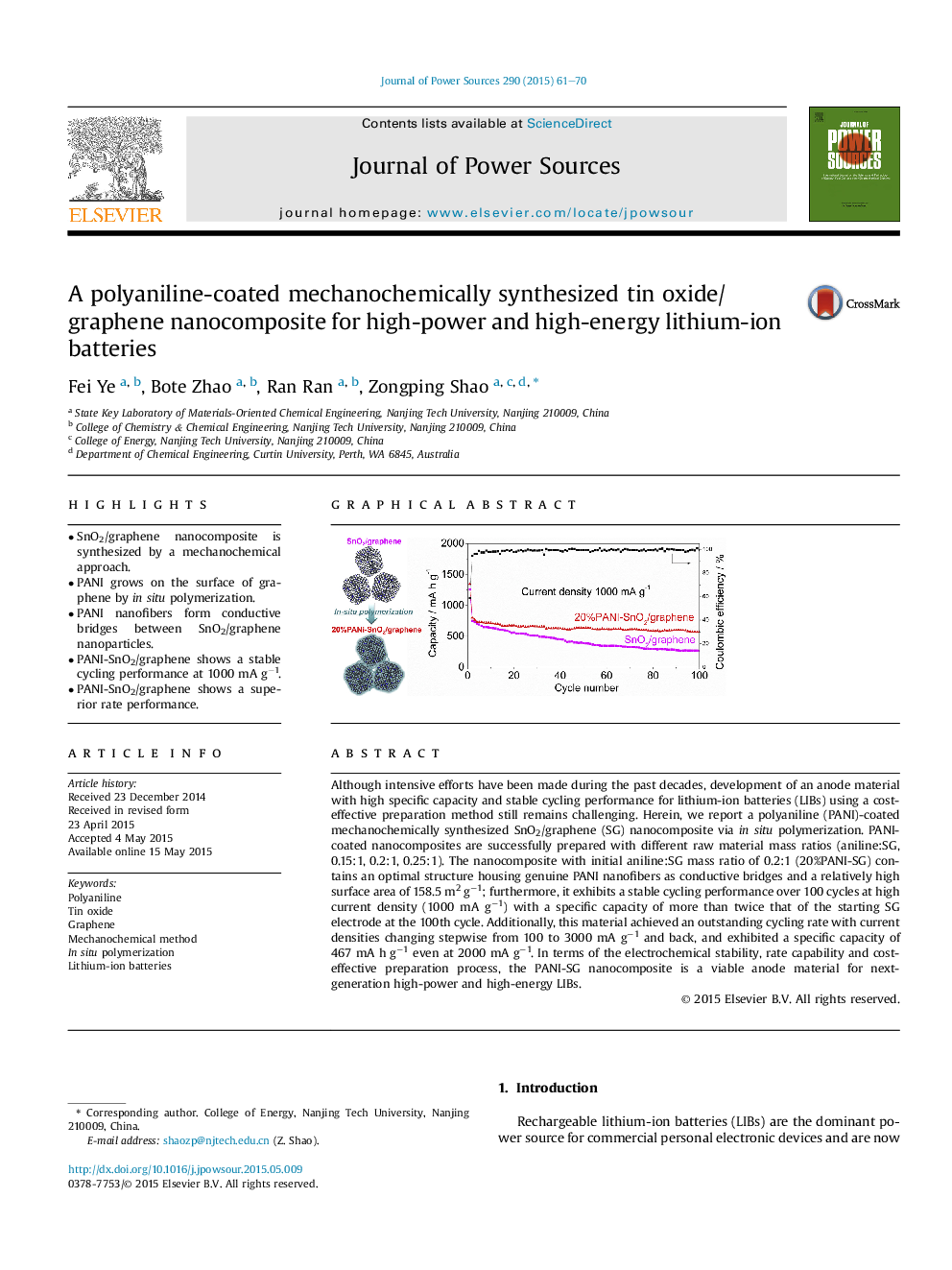| کد مقاله | کد نشریه | سال انتشار | مقاله انگلیسی | نسخه تمام متن |
|---|---|---|---|---|
| 1286077 | 1497942 | 2015 | 10 صفحه PDF | دانلود رایگان |
• SnO2/graphene nanocomposite is synthesized by a mechanochemical approach.
• PANI grows on the surface of graphene by in situ polymerization.
• PANI nanofibers form conductive bridges between SnO2/graphene nanoparticles.
• PANI-SnO2/graphene shows a stable cycling performance at 1000 mA g−1.
• PANI-SnO2/graphene shows a superior rate performance.
Although intensive efforts have been made during the past decades, development of an anode material with high specific capacity and stable cycling performance for lithium-ion batteries (LIBs) using a cost-effective preparation method still remains challenging. Herein, we report a polyaniline (PANI)-coated mechanochemically synthesized SnO2/graphene (SG) nanocomposite via in situ polymerization. PANI-coated nanocomposites are successfully prepared with different raw material mass ratios (aniline:SG, 0.15:1, 0.2:1, 0.25:1). The nanocomposite with initial aniline:SG mass ratio of 0.2:1 (20%PANI-SG) contains an optimal structure housing genuine PANI nanofibers as conductive bridges and a relatively high surface area of 158.5 m2 g−1; furthermore, it exhibits a stable cycling performance over 100 cycles at high current density (1000 mA g−1) with a specific capacity of more than twice that of the starting SG electrode at the 100th cycle. Additionally, this material achieved an outstanding cycling rate with current densities changing stepwise from 100 to 3000 mA g−1 and back, and exhibited a specific capacity of 467 mA h g−1 even at 2000 mA g−1. In terms of the electrochemical stability, rate capability and cost-effective preparation process, the PANI-SG nanocomposite is a viable anode material for next-generation high-power and high-energy LIBs.
Figure optionsDownload as PowerPoint slide
Journal: Journal of Power Sources - Volume 290, 20 September 2015, Pages 61–70
